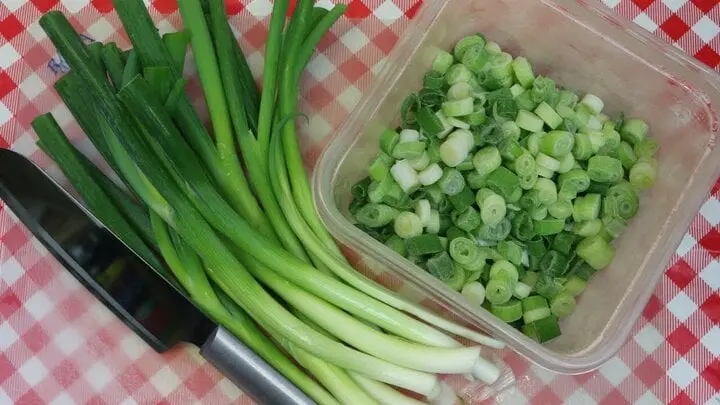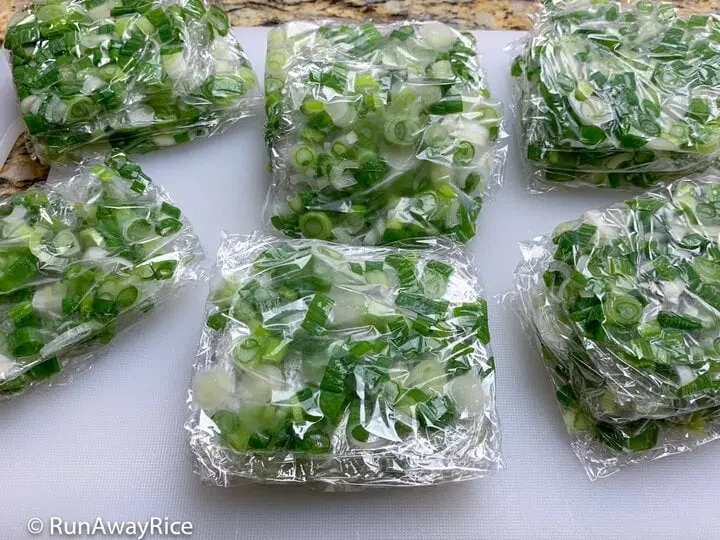Scallions, or green onions, are a staple in Vietnamese cuisine, adding color, flavor, and a host of health benefits to daily meals. Rich in minerals, vitamins, and phytochemicals, scallions boost bone, heart, eye, and immune health.
Simple Ways to Store Scallions
Scallions, when not stored properly, can quickly wilt and rot. Here are some simple methods to keep them fresh and lasting, specifically tailored for household use.
Refrigerate Scallions in the Crisper Drawer
Storing scallions in the refrigerator maintains their freshness and crispness. This is the most common method and requires special attention to washing and thoroughly drying the scallions before placing them in the fridge. This ensures their longevity, preserving their natural green color and aroma.

A simple way to store scallions: Wash, chop, and place them in a sealed container in the fridge. (Photo: Allrecipes)
To do this, trim the roots, remove any damaged leaves, wash thoroughly, and air dry. Once dry, chop the scallions and place them in a container with a tight-fitting lid, then store in the refrigerator.
Freeze Scallions
Storing scallions in the freezer can prolong their lifespan even further than the crisper drawer. When done correctly, they can last for several weeks.

Scallions stored in the freezer can last for several weeks. (Photo: RunAwayRaice)
Clean and dry the scallions, then finely chop them. Due to their small size when frozen, it’s best to portion them into multiple small containers or nylon bags for easy access and to save space.
Store Scallions with Paper Towels
This method helps keep scallions fresh and green for an extended period. Paper towels absorb moisture, preventing spoilage and maintaining dryness.
After cleaning and trimming the roots, thoroughly wash and dry the scallions. Cut them into 3-4 cm segments for easier wrapping. Place the segments in the center of a paper towel and wrap them securely. Repeat this process until all the scallions are wrapped, then place the paper towels in a zip lock bag and store in the refrigerator.
If, after a week, you still have scallions left, replace the paper towels with a fresh set.
Dehydrate Scallions
Dehydrating scallions is another simple preservation method. After washing and finely chopping the scallions, sun-dry them until they become crisp. Alternatively, use a dehydrator for this step. Store the dried scallions in a clean jar with a tight-fitting lid and place in the refrigerator. This method ensures long-lasting scallions without the risk of spoilage.
Notes on Storing Scallions
Storing scallions is straightforward, but keep the following in mind:
– Only store freshly picked, undamaged scallions that show no signs of wilting or water damage.
– Always wash scallions before storing to maintain freshness and prevent contamination of other foods in the refrigerator.
– Do not store scallions for more than four weeks, as they can spoil and develop an off-putting taste.
– Use scallions immediately after removing them from the refrigerator.
– Discard any scallions that show signs of bruising or damage.
According to VTC News
































